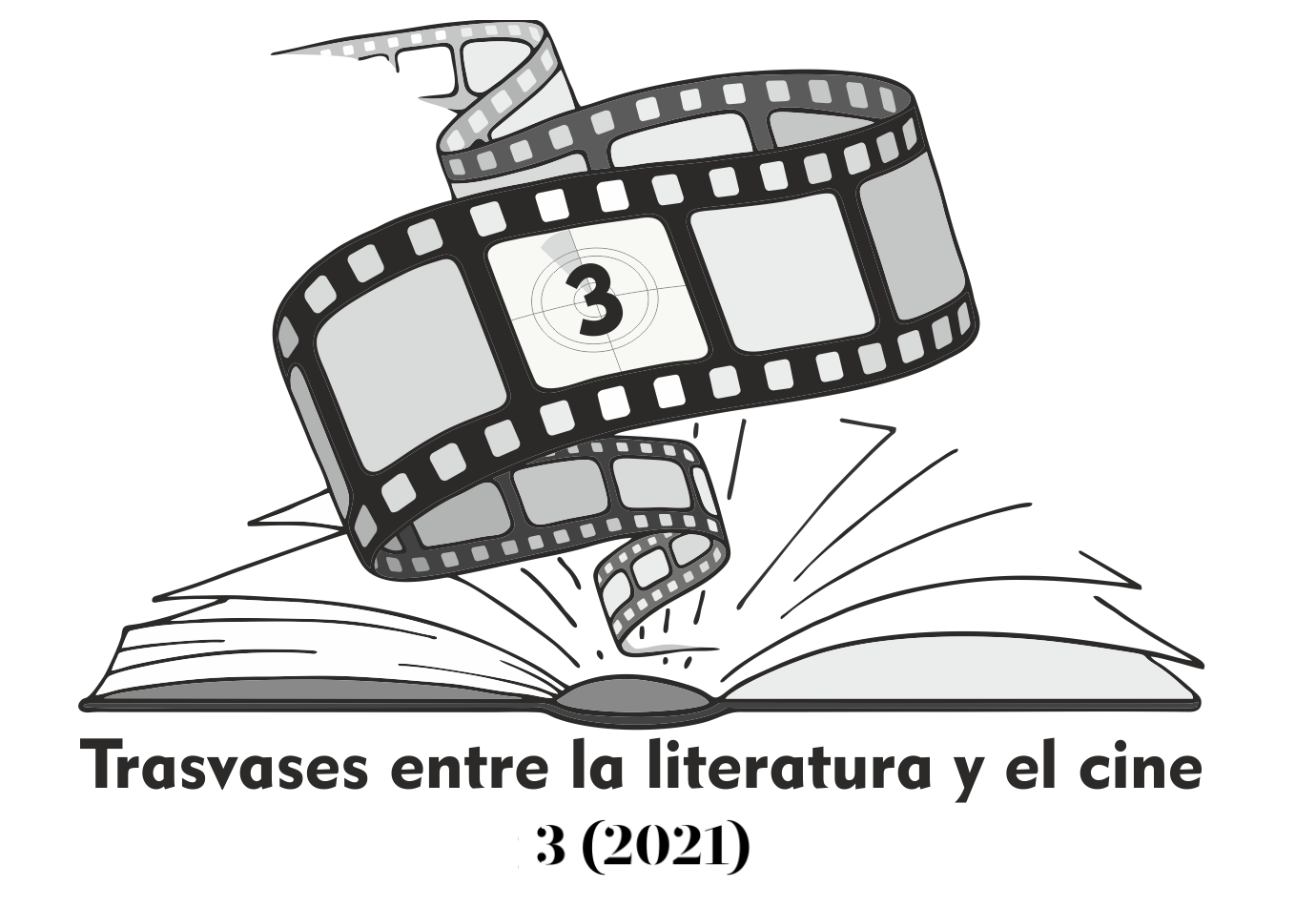Approximations and dialogues between graphic and film translations of the work of Roberto Bolaño
DOI:
https://doi.org/10.24310/Trasvasestlc.vi3.11922Keywords:
Film adaptation, graphic nove, evil, politics, Roberto BolañoAbstract
This reading proposal seeks to establish a dialogue between the filmic and graphic translations of the novels Una novelita lumpen (2003) and Estrella distante (1997) by Roberto Bolaño and the film El futuro (2013) by Alicia Scherson and Estrella distante (2018) graphic novel by Javier Fernández and Fanny Marín (2018). The research establishes how the narratives address the treatment of story, evil, the feminine and politics in the processes of translation from the literary to the cinematographic and the historietographic. The exercise of re-appropriation by audiovisual and sequential creators allows Bolaño's literary work to expand its meanings to other artistic manifestations, amplifying pre-existing narratives and empowering wider audiences.
Downloads
Metrics
Publication Facts
Reviewer profiles N/A
Author statements
Indexed in
-
—
- Academic society
- N/A
- Publisher
- Universidad de Málaga
References
BAETENS, Jan (2013), «Novelas gráficas: ¿literatura sin texto?», en J. M. Trabado (comp.), La novela gráfica. Poéticas y modelos narrativos, Madrid, Arco/Libros, págs. 169-187.
BAUDRILLARD, Jean (1996), El crimen perfecto, trad. de Joaquín Jordá, Barcelona, Anagrama.
BOLAÑO, Roberto (1996), La literatura nazi en América, Barcelona, Anagrama.
BOLAÑO, Roberto (1996), Estrella distante, Barcelona, Anagrama.
BOLAÑO, Roberto (2014), Una novelita lumpen, Barcelona, Anagrama.
BORGES, Jorge Luis (2014), El Aleph, Santiago, DeBolsillo.
CASTRO, Alfredo (2020), #ConversacionesEnCasa con Alfredo Castro. El Desconcierto. [En línea: https://www.youtube.com/watch?v=n8ABKp9Tucc/ Fecha de consulta 11/10/2020].
DEBORD, Guy. (2015), La sociedad del espectáculo, trad. de José Luis Pardo, Valencia, Pre-Textos.
DALLENBACH, Lucien (1991), El relato especular, trad. de Ramón Buenaventura, Madrid, Visor.
FOUCAULT, Michel (1986), Historia de la sexualidad 2. El uso de los placeres, trad. de Martí Soler, México, Siglo XXI.
GARCÍA REYES, David (2020), «Reescrituras en Soldados de Salamina o Las sendas de la memoria: Desplazamientos de la literatura en el cine y en la narración figurativa», Trasvases entre la literatura y el cine, 2, págs. 271-291.
GARCÍA REYES, David y SEPÚLVEDA, Gloria (2019), «De la “novelita” a “Il futuro”. Lecturas bolañianas en clave trasnacional», Archivos de la filmoteca, 0/77, 2019, págs. 177-196.
GONZÁLEZ, Rodrigo (2013), «El futuro. La triste crónica romana de Alicia Scherson sobre Bolaño. La Tercera. [En línea: http://ibermediadigital.com/ibermedia-television/el-futuro-la-triste-cronica-romana-de-alicia-scherson-sobre-bolano/ Fecha de consulta: 15/11/2020].
HAMBURGUER, Käte (1995), La lógica de la literatura, trad. de José Luis Arántegui, Madrid, Visor.
ISER, Wolfgang (1987), El acto de leer. Teoría del efecto estético, trad. de Manuel Barbeito, México, Taurus.
MERINO, Sofía (2018), «Una carta de amor a Roberto Bolaño», El País, s. pág. [En línea: https://elpais.com/cultura/2018/07/12/actualidad/1531399744_205465.html Fecha de consulta: 20/11/2020].
PAZ GAGO, José María (2004), «Propuestas para un replanteamiento metodológico en el estudio de las relaciones de literatura y cine. El método comparativo semiótico-textual», Signa, 3, págs. 199- 232.
PIGLIA, Ricardo (2006), Crítica y ficción, Barcelona, Anagrama.
ROSENRAUCH, Erich (1961), Noches sin gloria, Santiago, Editorial Del Pacífico.
SCHERSON, Alicia (2013), Il futuro, prod. Chile, Italia, Alemania, España. 92 min.
SIMUNOVIC, Horacio (2006), «Estrella distante: Crimen y poesía», Acta literaria,33, págs. 9-25.
SOTO, Simón (2019), «Un True Detective en La Araucanía: así es la serie chilena ambientada en el conflicto mapuche», La Tercera, 21 de junio. [En línea: https://www.latercera.com/culto/2020/06/24/un-true-detective-en-la-araucania-asi-es-la-serie-chilena-ambientada-en-elconflicto-mapuche/. Fecha de consulta 01/05/2021].
TRABADO, José Manuel (2013), «La novela gráfica en el laberinto de los formatos del cómic», en J. M. Trabado (comp.), La novela gráfica. Poéticas y modelos narrativos, Madrid, Arco/Libros, págs. 11- 61.
Downloads
Published
How to Cite
Issue
Section
License
Copyright (c) 2021 Gloria Sepúlveda

This work is licensed under a Creative Commons Attribution-NonCommercial-ShareAlike 4.0 International License.
All authors published in this journal accept the following copyright terms:
a. Authors retain their authors´ rights (copyright) and grant First Publication Rights to the journal, which whill be published under a the Creative Commons Attribution-NonCommercial-ShareAlike 4.0 International (CC BY-NC-SA 4.0) license. All about this license is available in the following link: <http://creativecommons.org/licenses/by-nc-sa/4.0>
b. Authors may separately establish additional agreements for the non-exclusive distribution of the version of the work published in the journal (e.g. including it in an institutional repository, or publishing it in a book) with an acknowledgement of its initial publication in this journal.
c. Authors are allowed and encouraged to disseminate their work electronically (e.g. in institutional repositories or on their own website) as this can lead to productive exchanges, as well as earlier and more extensive citation of published work.
The author is responsible for obtaining permission from the copyright holder when using copyrighted materials.
This electronic journal is published by University of Málaga (UmaEditorial), thus it is necessary to cite the origin of any partial or total reproduction.








22.png)










